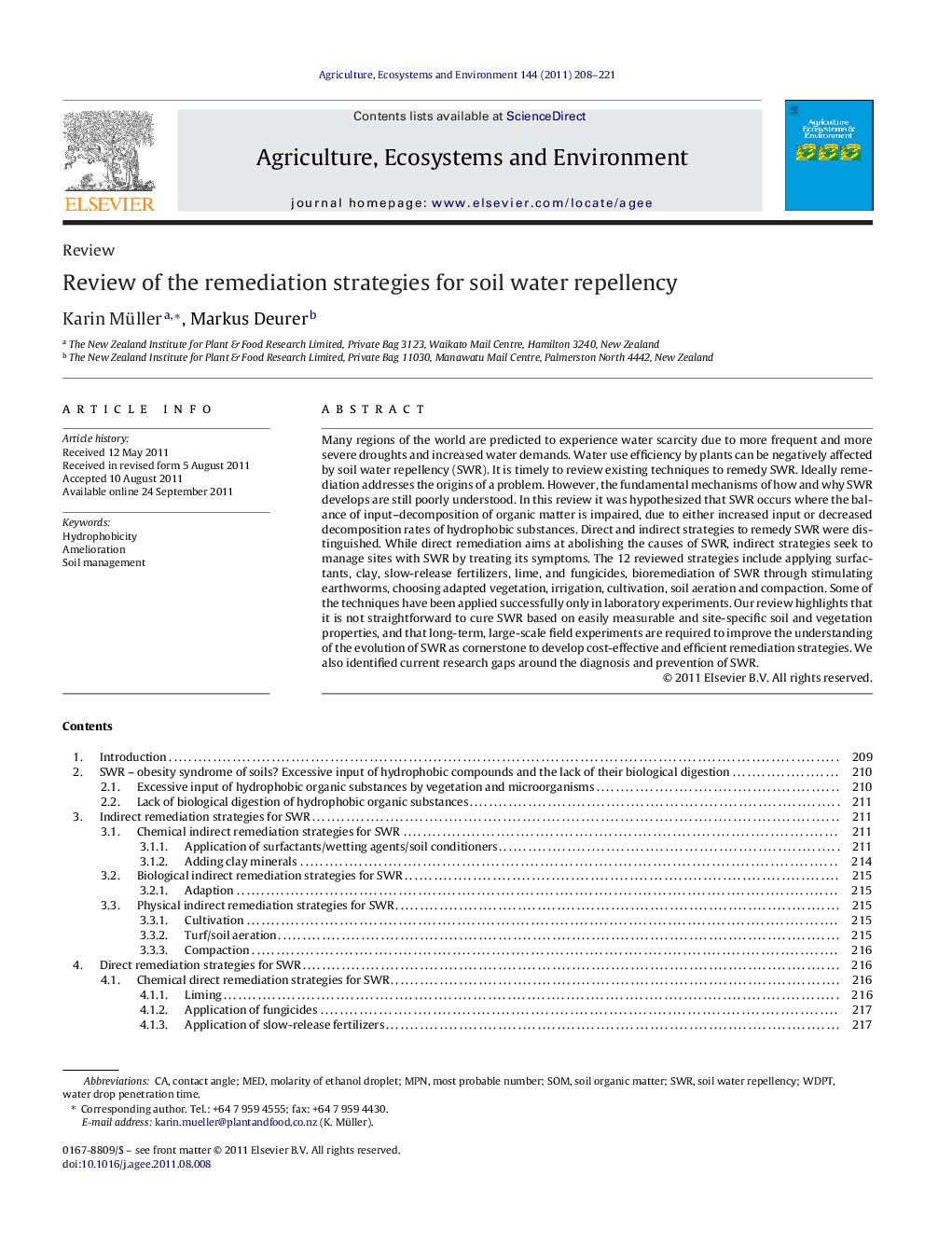| Article ID | Journal | Published Year | Pages | File Type |
|---|---|---|---|---|
| 2414770 | Agriculture, Ecosystems & Environment | 2011 | 14 Pages |
Many regions of the world are predicted to experience water scarcity due to more frequent and more severe droughts and increased water demands. Water use efficiency by plants can be negatively affected by soil water repellency (SWR). It is timely to review existing techniques to remedy SWR. Ideally remediation addresses the origins of a problem. However, the fundamental mechanisms of how and why SWR develops are still poorly understood. In this review it was hypothesized that SWR occurs where the balance of input–decomposition of organic matter is impaired, due to either increased input or decreased decomposition rates of hydrophobic substances. Direct and indirect strategies to remedy SWR were distinguished. While direct remediation aims at abolishing the causes of SWR, indirect strategies seek to manage sites with SWR by treating its symptoms. The 12 reviewed strategies include applying surfactants, clay, slow-release fertilizers, lime, and fungicides, bioremediation of SWR through stimulating earthworms, choosing adapted vegetation, irrigation, cultivation, soil aeration and compaction. Some of the techniques have been applied successfully only in laboratory experiments. Our review highlights that it is not straightforward to cure SWR based on easily measurable and site-specific soil and vegetation properties, and that long-term, large-scale field experiments are required to improve the understanding of the evolution of SWR as cornerstone to develop cost-effective and efficient remediation strategies. We also identified current research gaps around the diagnosis and prevention of SWR.
► More fundamental research is required to understand/confirm the underlying mechanisms for the occurrence of soil water repellency (SWR). ► It was hypothesized that SWR develops where the balance of input–decomposition of organic matter is impaired. ► Direct and indirect mitigation strategies applying chemical, biological and physical methods are reviewed with emphasis on mechanisms and limitations. ► Research gaps around the ecological significance of SWR, its diagnosis and preventions are identified.
